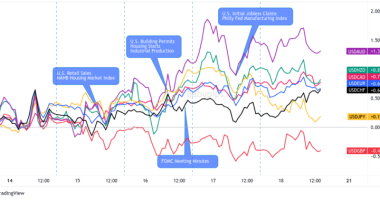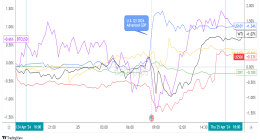
SHANGHAI: The yuan slipped on Monday morning, as month-end corporate dollar demand offset upbeat manufacturing data but the local currency remained on track for its sixth straight monthly gain, the longest winning streak since late 2014.
Official data on Monday showed China’s factory activity expanded at the fastest pace in more than three years in November, while growth in the services sector also hit a multi-year high.
Continued economic recovery from coronavirus disruptions, better COVID-19 containment and steady capital inflows have supported the Chinese unit in recent months and many economists expect further upside for the yuan.
“Given China’s increasing focus on independency of monetary policy, it will gradually loosen its tight control on currency volatility,” said Tommy Xie, head of Greater China research at OCBC Bank in Singapore.
“This means that China will have higher tolerance for a possible overshoot of RMB in the near-term.”
The onshore yuan opened at 6.5700 per dollar and was changing hands at 6.5845 at midday, 90 pips weaker than the previous late session close.
If the yuan finishes the late night session at the midday level, it would have gained 1.7% against the dollar for the month, marking the sixth monthly gain in a row. It has strengthened more than 8% since late May.
Traders said seasonal corporate dollar demand to settle their overseas payments was heavy on Monday and pressured the yuan, but such impact would be short-lived.
Li Liuyang, chief currency analyst at China Merchants Bank, said much of the market attention would be shifted to global central bank decisions, as the European Central Bank and the U.S. Federal Reserve hold separate policy meetings next month.
“Further easing in monetary policy may suppress low-interest currencies and push higher-interest currencies. And the yuan exchange rate may continue to rise at that time,” Li said.
Meanwhile, China’s central bank surprised markets on Monday with an injection of medium-term cash into the banking system, in what traders and analysts viewed as a move to calm nerves rattled by a string of recent bond defaults.
The move effectively dragged onshore yields and rates in the forward market lower. One-year dollar/yuan swap point fell to 1,680 points, the lowest level since Nov. 5, indicating looser liquidity levels.
Prior to market opening, the People’s Bank of China (PBOC) set the midpoint rate at 6.5782 per dollar, 27 pips weaker than the previous fix of 6.5755.








